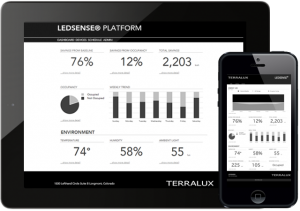Share This
Related Posts
Tags
Ledsense
By Anca Gagiuc on Jun 10, 2015 in Technology
The Smart Home is a very entertained interest in  the technology industry; nowadays it comes equipped with devices capable to increase comfort, protect occupants, and save on utility bills. Houses already have Nest – the smart thermostat, Goji – the smart lock, Tado Cooling – the air conditioning/ thermostat smart device, and Luna – the smart mattress cover.
the technology industry; nowadays it comes equipped with devices capable to increase comfort, protect occupants, and save on utility bills. Houses already have Nest – the smart thermostat, Goji – the smart lock, Tado Cooling – the air conditioning/ thermostat smart device, and Luna – the smart mattress cover.
Using the smartphone as the device to turn on lights, lock doors, check humidity levels, and monitor energy use inside the home, requires a large data set, and systems must be programmed individually and connected to the controlling transmitter. Terralux, a LED lighting company, recently launched a new product named Ledsense, which is a cloud based lighting system with brain power.
Looking at the evolution of LEDs, not too long ago, they were not only ineffective, but also very expensive; those were the shining times of the Compact Fluorescent Lamps (CFLs). Since then things evolved and nowadays LEDs show increased improvement in efficacy, today demonstrating some of the highest light outputs – measured in lumens per watt – and at the same time, the economics of LEDs are compatible with other light sources. Slowly, but surely, LEDs are replacing CFLs, with more and more organizations looking to save money and deliver a lighting alternative that is friendly with the environment.
The Ledsense platform integrates the LED light unit with sensor communication and control technology; it acts like an Internet of Things on LED lights. These units are quite amazing: they include sensors that can determine building temperature, sense motion from a person in the vicinity, and even sense odors and potentially toxic chemicals in the air. All this data is collected and then communicated back to the building owner, through the cloud.
“A light is no longer simply a device that allows you to see in the dark. We are deploying a LED platform that goes beyond basic illumination. Technology available in buildings today will pale in comparison to the capabilities we are building in the emerging cloud lighting space,” says Steve Hane, Terralux CEO.
A fascinating feature of Ledsense is the “Demand Response” alert which makes the unit automatically adjust light levels in a building to balance grid demand. More exactly, if a light sees people enter a room, it will raise the lighting to a brighter level; when people leave the room, the lights see that and will lower the brightness, saving energy. Moreover, if a dangerous gas is detected in the air (or if the restroom is odorous), the light will switch on an exhaust fan or trigger an alarm system. Advanced sensors provide safety and security information and alerts, through the LED lights.
Ledsense is a tool for energy efficiency – in some applications it can reduce energy costs in a building by up to 90 percent. Of course, these gains are created not only through the power reduction that LEDs bring, but through the association of this benefit with smart lighting control. Building owners, security, or maintenance staff can monitor remotely energy use, occupancy, air quality, and other environmental factors in a Ledsense equipped building from a computer, tablet, or smartphone, or by logging into their Ledsense portal.
